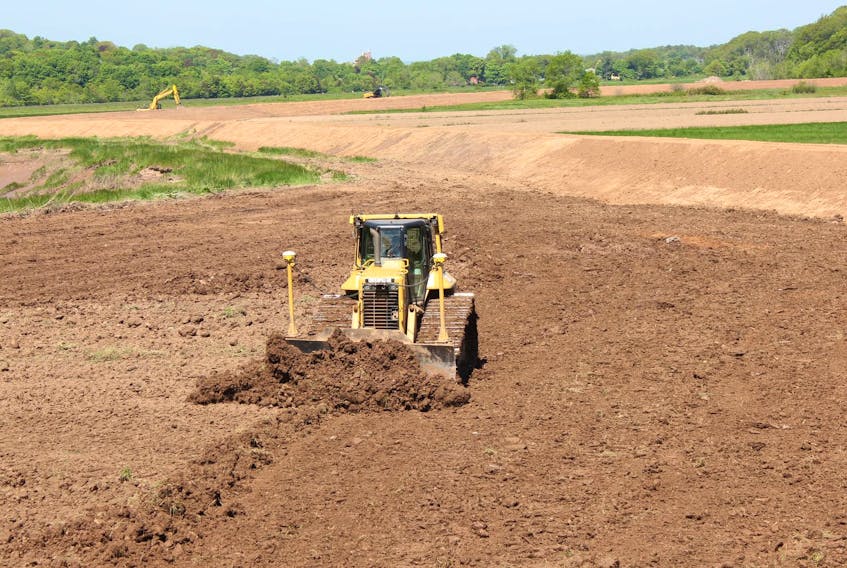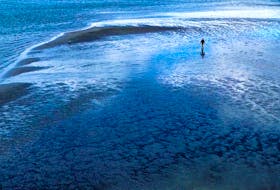Much of the Fundy dike network that protects rich Nova Scotia farmland and other built infrastructure is getting an overhaul over the next decade.
But before the upgrade work kicks in, the province will be asked to determine how much greenhouse gases the projects will generate.
“It’s part of the general requirements under that disaster mitigation and adaptation fund,” Kevin Bekkers, resource sustainability director with the provincial agriculture department, said of the department’s gas emission tender that closes Wednesday.
“(We) are asked to look at our project and do a greenhouse gas assessment to confirm if projects are going to impact greenhouse gases in a negative way during the construction of what we are trying to build,” Bekkers said. “That’s one of the requirements and you cannot proceed without completing that (greenhouse gas consultation) work and that work has to be done in the early stages.”
In June 2018, the federal government announced in Halifax that new major infrastructure projects seeking federal funding will be required to assess projects on carbon pollution. The Climate Lens is to be applied to any project with a total estimated cost of more than $10 million.
In April, Infrastructure Canada announced a nine-year, $50-million project to upgrade 60 kilometres of dikes and five aboiteau structures along the Bay of Fundy dikelands. Agriculture Department spokeswoman Chrissy Matheson said the projects are located in the Cumberland Basin, Cobequid Bay, Southern Bight near Windsor, and the Annapolis River system.
As part of the shared federal and provincial project expenditures, a consultant will be hired to assess expected emissions.
“We’re anticipating that the work that we are going to be doing with the provincial dikeland system will have minimal impact,” Bekkers said. “It’s quite a positive project and it’s a great opportunity for Nova Scotia to partner with the feds on this fund to get this critical infrastructure. It’s quite important for a lot of the communities for the land that it protects.”
Bekkers said the tender has generated interest from several consultant companies. He said the consultant work on greenhouse gases is not likely to exceed a cost of $250,000 and he dismissed the notion that it’s a ploy by governments to potentially avoid the work and the cost of upgrading the dike system.
“I see it more as a positive that they are trying to make sure that (project) proponents are thinking about how they are going to do work. If you are going to go build something that will take a significant amount of resources and effort that would negatively impact greenhouse gases, is there another way that you can do that project that will have less of an impact. For the work that we traditionally do, we are not seeing any of those concerns.”
Mark Butler of the Ecology Action Centre in Halifax said assessing projects for potential emissions is a good idea.
“It is really important to assess what the climate costs of a particular project could be and to not proceed if they are too high, or to look for ways that they could be reduced,” Butler said.
Butler said a climate lens fits with a dike project for which the impetus is climate change, rising sea levels and more severe storms. Butler doesn’t want to see the climate lens become just another regulatory hoop that has to be jumped through before getting project approval.
The consultant contract work will focus on emissions, “how much fuel the excavators and trucks we are going to be using to do that work are going to contribute to greenhouse gas,” Bekkers said.
“If we were destroying more saltmarsh, that (marsh) has a significant benefit for greenhouse gas emissions as well. We’re looking at having a balanced approach or even creating more saltmarsh opportunities in the province with this work.”
Bekkers said the department is waiting for final federal approvals and the projects should be underway by next year.









